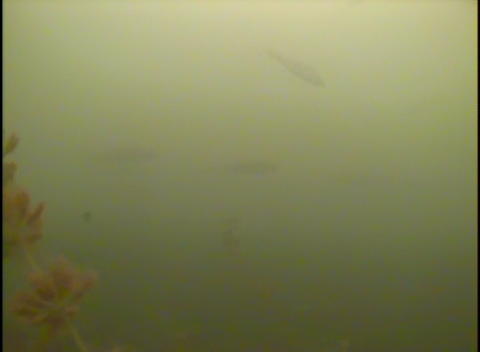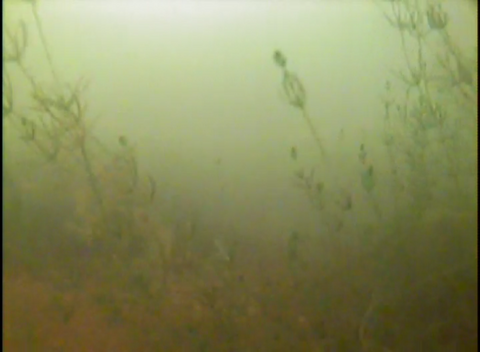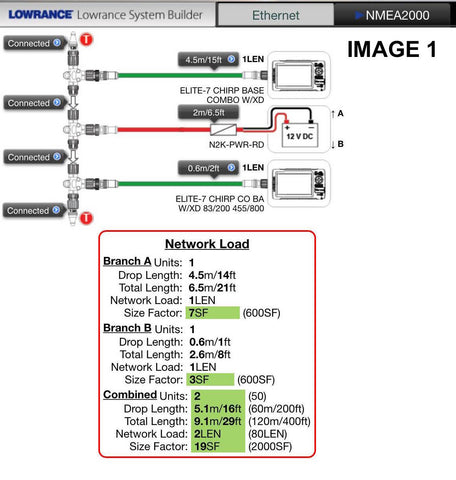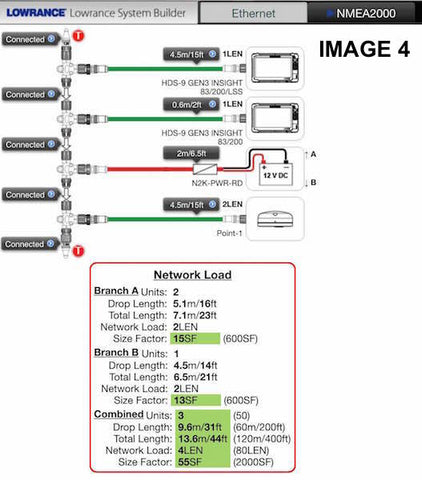Home map research pays off
Last weekend was South Dakotas Largest fishing tournament of the year. It brought 1050 ice anglers to Lake Oahe. With the tournament being near the holidays and having a baby in late fall I wasn't going to be able to prepare for this tournament on the water. Instead I broke down Doctor Sonar map card at home on my Lowrance fish finder. The detail of the map enabled me to narrow down my target area to only a handful of what I felt was high percentage spots. I found one area that had 3 high percentage spots within close proximity of each other so I decided that's where we were going to go tournament day. This was going to be a put all your eggs in one basket strategy due to the location and poor ice conditions.
When we arrived at the location one spot was already taken so we went to the 2nd spot on the list. It was Main lake point next to deep water with a nice deep ledge and feeding shelf. We decided the best way to attack this spot was to get into position with the Lowrance GPS and Docs map card. We then wanted to cover all depths of the point edge so we could find what depth the fish were in. This is critical. We spread lines from 15-55 ft. It didn't take long and the deep tip up got bit. Within 2 hours we had moved the shack and all of our gear out super deep. Once we got the depth right, the point and shelf just funneled the migration of fish right past us. In a short 5 hours of fishing we had caught around 40 walleyes. 5 of those walleyes being weighable fish. We were happy with that because it was our first time ever ice fishing Lake Oahe.


We ended up finishing 19th out of 525 teams. We considered that a great success since we relied purely on our Map Card and a theory. So next time you are thinking about hitting the hard water take your GPS with you and do a little homework. You may surprise yourself on how quick you can put a pattern together.


I get questioned about how to use an underwater camera in summer when the algae bloom. The images aren’t as good as spring and fall but I can still identify the species. I use my Aqua-Vu Multi-Vu Camera System attached to my Lowrance Gen 3 with the optional video in power cable so we can all view the secrets of the deep on the Lowrance! Sometimes it is too much fun and I forget I am fishing. Yesterday the fish weren’t biting and I dropped the camera but there was a big algae bloom on my lake and I couldn’t see below 12 feet well. I looked up and my bobber was down with a 21 ½ inch walleye. Nice thing about bobbers is you don’t have to pay attention and you can still catch them.

I was wondering about these fish since I was hunting bluegills and dropped the camera on another dark water lake. The images are poor but I was able to identify them as perch. Too bad they were too small to fillet! Perch are one of my favorite fish to eat.
The images show the school of perch and the short weeds.



I use the camera to identify what I am seeing on the sonar since I teach sonar I need to be as exact as I can when i say that looks like _______.
Do you think this is a good spot to fish? Make a guess what you see, I am fishing vertical in waves so everything is wavy looking. The screenshots are from Humminbird ONIX with the all in one transducer using 200 kHz. The Lowrance Gen 3 is using the Airmar TM150 transducer on fixed frequency 145 kHz. I run both at the same time for comparison and if I see a fish on just one transducer I know which side of the boat it is on!!!!


I was fishing weeds like these since all kinds of fish like emerging weeds.
I tried slip bobbers, jigs and rigs with no bites so my friend and I took a look with my AV Multi-Vu Complete Camera System which has no screen but a plugs into my Lowrance Gen 3 and I use it as the screen.

Well, I was wrong again! I thought I was seeing fish in the weeds but I looked for a long time and never saw a fish but saw many tall weeds lying horizontal so the sonar did not show the weeds as attached to the bottom and they then looked like fish to me. I have said for years the best use of a camera in the boat is if you see fish and can’t get them to bite look with the camera to confirm if you are reading your sonar correct. Many times the fish are the wrong species and like this time unusual weeds.

Boat Electronics Mild to Wild.
I work a number boat shows every year for Lowrance Electronics and I wish I had a dime for every boater/angler that walks up to the electronics display and stands there in bewilderment and awe of the latest techno-gadget to see the depth and fish.
As they ponder upon the latest electronics gadget for bit as they take it all in, I will strike up a friendly conversation asking how their day is going, if they have had enough of winter, and if they have any questions or concerns on the new techno-fish finding gadget and 90% of them do.
Here is a list of questions I will ask a boater/angler to find out what their needs are…
● What sonar do you have now?
● What kind and style of boat?
● Tiller or console?
● Type of fishing?
● Do you do lots of casting? A Point 1 GPS module with a heading sensor may be helpful to help them pinpoint structure.
● Budget?
● Screen size? You will never regret going bigger, just make sure it will fit in the intended space.
● Are you going to keep your existing equipment?
● Do they want a stand-alone or they interested in multiple units?
● If they have multiple units. Explain how units can be networked together
● And the latest sonar technologies DownScan, SideScan, CHIRP, GPS etc.…
You can spend less than $100.00 for a quality stand alone sonar unit if that’s all their budget allows, and meets the criteria for your fishing style. Or the skies the limit with multiple networked sonars with StructureScan technology, stereo, auto pilot and more!
There are many options in rigging electronics. Keep in mind if you plan on using 2 stand alone sonars such as the Lowrance Elite series on the bow with a transducer on the trolling motor and the other on the console with the transducer on the transom, you could run into cross talk if both units are used on deeper water. There are some ways to alleviate this by setting each unit to run on different frequencies or adjusting ping speed if they are capable of making these adjustments. Or going with units that are networkable, units like the Lowrance HDS series you can select which transducer to source to read.
Here is an overview of NMEA 2000 and Ethernet capabilities.
● NMEA 2000 shares data such GPS modules, engine data, limited waypoint management, Sonic Hub, autopilots control for a bowmount trolling motor or a main engine auto pilot and more. NMEA 2000 requires a separate power source to power this network.
● Ethernet shares data such as map cards, waypoint management, syncing multiple sonars, weather modules, screens and more…
Once we go through all these questions, we can then work together to formulate what would work best for their needs. Lets run through a couple of scenarios on various types of boats and budgets.
● Tiller or console boat with no intentions of networking. Here is where the Lowrance Elite series excels; depending on your budget you can go up from a 3” screen all the way to a 9” screen. You can get DownScan, CHIRP and GPS in this series, these are a user friendly units basically a plug-n-play and go fishing units.
● Console boat with a bow mount trolling motor. This boater wants 2 sonars and wants to save some money, look at going with 2 Elite series units. One on the console with a transom transducer and the other on the bow either using a built in transducer if equipped or strapping on a external transducer. Certain Elite units have limited networking capabilities via a NMEA 2000 network with limited waypoint sharing and can share a POINT 1 GPS module. Keep in mind you may run into crosstalk issues in deeper water. (Example 1 and 2)
● Console or tiller boats is where a customer wants all the bells and whistles. Multiple sonar units networked together via Ethernet and NMEA 2000. This is where units like the Lowrance HDS units come into play, a customer might have 2 HDS units on the console one for sonar/StructureScan and the other for GPS Mapping, and HDS unit on the bow connected to the built in trolling motor transducer and another HDS unit on the transom to view while trolling. (Example 3,4,5 and 6)
Here all units would be connected via Ethernet and NMEA 2000. The Ethernet cable will be daisy chained between sonar units, weather module if installed, basically plug-n-play. NMEA 2000 would also connect to all the units that require NMEA 2000. NMEA 2000 is a bit more complicated and requires some additional components such as a power node, tees, cables and end cap resisters. See the attached photos of Ethernet and NMEA 2000 set-up.






As you can see there are endless combinations of sonar and component configurations available. When in doubt look for a sonar representative or a store associate for advice.
Hopefully this article helped you to make a decision on a sonar package that will fit your needs.
Kirt Hedquist
Kirt Hedquist Outdoors LLC
Doctor Sonar and Lowrance Pro Staff
By Doctor Sonar Pro Staff Kirt Hedquist
Have you ever found Walleyes live bait rigging or pulling spinners, and the fish have been in a positive mood, biting all day.... and then they just plain shut down? The Lowrance is still marking fish but they have become uncooperative and are holding tighter to the bottom, no longer taking your faster presentation?
I live by the motto - Don’t leave fish to find fish. It’s time to get down to their level, and hunt them down.
Armed with a Fin-tech NuckleBall Jig tipped with a minnow, a good jigging rod like one of St Croix’s Legend Tournament Series, a top quality spining reel loaded with superline, and a Lowrance HDS series with Navionics Mapping is key to find those fish that are holding tight to the bottom. Mark your waypoints where the fish where biting earlier as a good starting point. Move around slowly looking for that slight separation or change in the bottom indicating a fish. Drop the NuckleBall jig down into the fish, and use various jigging strokes. This technique is where the Lowrance HDS Sonar unit’s really shine; the jig can be clearly viewed as it approaches the fish, and the jigging motion is easy to see. When a fish smacks that jig, the superline and St. Croix will leave little doubt; set the hook hard!
Start by lifting ithe jig slowly up and down to see if this will entice a strike. If this fails, change up the cadence by holding the jig stationary in the fish’s face, and if this fails drop the jig to the bottom; the stand up head design keeps the bait pointed up in a tantalizing position and an easy meal will be tough to resist.
If fish are not being marked at the waypoints where they were biting earlier, start moving circularly outward, slowly scanning the bottom. The fish may have moved off to a subtle break, slipped out to deeper water, or moved to near by rocks. When they are relocated, repeat the same procedure as above and SLAM 'em!

DownScan Interpretation
This explanation is to help explain what you see with down imaging, it is pertinent to all brand’s down imaging.
Down imaging has a wider cone and will show targets off the side better than the 2D sonar (traditional sonar 200 kHz).
Notice the man-made structure plus the rocks.
Sonar tells us the distance to the target. The man-made structure pointed out with the white arrow is 8 feet from the transducer. How about the red arrow? It is pointing at rocks and long strips of something man-made. You can’t tell which side it is on since the left and right edge of the cone is combined, something 12 feet from the transducer on the left with be superimposed on something 12 feet from the transducer on the right side.

If you have side scan you can see which side of the boat a target is.
Notice the rocks are opposite the man-made structure but on the DownScan they are overlapped.

The next example shows fish by a tree on DownScan and the side scan shows the same fish to the left side. The problem is we don’t have enough screens to show all we want. I like to see the map, 2D sonar, down imaging and side scan and that is a lot of dash space to be used. The fish and the tree look like white spots and are hard to interpret. I like one model with splitscreen sonar and DownScan and one splitscreen map and side scan with the side scan using 2/3 of the screen since wide screens are best for side scan like I used 2/3 for sides can in the image.

Brief review of Lowrance CHIRP

Read More >>
Another article using fish arches to help you understand sonar.

Read More >>
I often get questions on what fish look like on side scan at different speeds from both Humminbird and Lowrance users.

Read More >>
Learn why and how to use Insight Genesis by Doctor Sonar

Read More >>

































